For European Mediterranean Countries like Italy, Malta and Greece this has been not something new, since they always experienced the arrival of desperate people crossing the Mediterranean while hoping to leave their troubled homelands and to get (even though illegally and with enormous risks - deadly shipwreckings were not rare) to Europe.
Some of them were asylum-seekers, but not so many; so the EU mildly developed some asylum policies under the infamous Dublin Regulations, that left heavy responsibilities to the first incoming and welcoming Countries - hence, the Mediterranean ones.
Those Mediterranean Countries were moreover left alone with their means in patrolling sea and coasts, except for the poorly equipped “Frontex+” programme, implemented after Italy’s pressures due on the increasing number of illegal boat journeys (and shipwrecks) encouraged by the unstable political situation in Libya, the main harbor for those illegal journeys.
But in 2015, the Syrian civil war triggered another path for migration towards Europe, the so called “Balkan route”, mainly terrestrial through Turkey, Greece, Macedonia, Serbia, Croatia, Hungary or Slovenia to get finally to the most aspired destinations, the rich Austria, Germany, Denmark, and Sweden.
In August, problems began at the border between Macedonia and Serbia and at the border between Serbia and Hungary. The Hungarian government answered with the well known “wall” and blocking migrants who made it to Budapest, while Croatia and Slovenia started tightening their border controls. Austria and Germany initially showed solidarity, with people going from Vienna to Budapest and back to carry migrants from Hungary to Austria, and people warmly welcoming Syrian refugees in several train stations in Germany.
But soon the refugees and migrants flux became too intense, the incidents involving foreigners too numerous, the indigenous people too hostile and the costs for these operations too high.
As of 1 February, internal border controls are reintroduced in Germany, Austria, Denmark, Norway and Sweden (+ France, following the 13/11/2015 terrorist attacks in Paris); Sweden is expelling 80’000 asylum seekers; Denmark will seize migrants’ goods if they will exceed a 10’000 Krones of estimated value.
Well, that escalated quickly.
In the meantime, there were several attempts within the EU to solve: let’s introduce quotas for redistribution of asylum seekers; let’s improve external border controls, let’s renegotiate Dublin Regulations. Finally no agreement was found on definitive decisions and eventually the EU as an institution is risking to collapse because of 500’000 migrants.
Freedom of movement within the EU is not the problem. Freedom and rights cannot be problems. The problem is that, once again, EU Member States cannot find common solutions within the intergovernmental system of the Union.
Limiting the effectiveness of the Schengen Agreement is simply wrong, because the issue of migrants fluxes towards Europe is something concerning the external borders of the EU while member States are finding a solution concerning the internal borders of the Union.
Acting unilaterally is also wrong, because this issue is affecting the whole Europe and therefore it needs a single, common answer from the whole Europe.
All this is not acceptable. And when we talk about the EU not being able to do something, we are actually talking about Member States’ governments not being able to find an agreement, since the EU works with an intergovernmental system. This system has already shown, and it is going on to show, its deficiencies: few governments can damage the interest of the whole Union for the sake of their interests, not understanding that if the Union collapses, they will do as well.
The logical solution is to develop a single action regarding the protection of EU external borders, the identification of migrants and the analysis of their asylum requests, backed by single policies about foreign affairs and asylum.
It is absolutely needed to eventually overcome the Dublin Regulation and the intergovernmental system and to proceed therefore towards a federal system.
JEF-Europe, firmly believing in the need for a further democratic development of the political integration of the European Union towards a federation as the only way to cope with the problems of the globalized world, always respecting the principles of democracy, freedom, subsidiarity and rule of law, called its sections and activists (30’000 in more than 35 European Countries) to mobilize in a campaign called #DontTouchMySchengen.
This campaign will run on the social media for the whole first week of February and will culminate on 6 February in dozens of squares and streets in the whole Europe, where JEF activists will ask for a free, democratic, federal Europe and against the end of the freedom of movement in Europe. #DontTouchMySchengen!
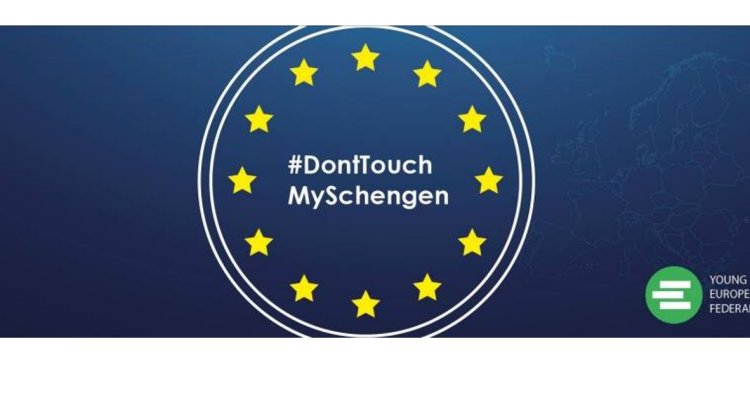

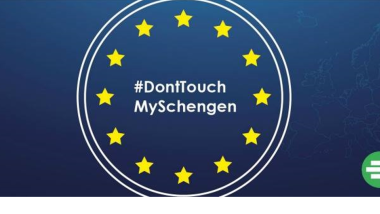
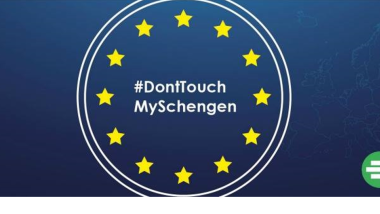
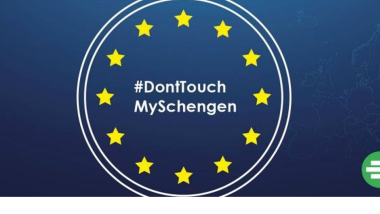
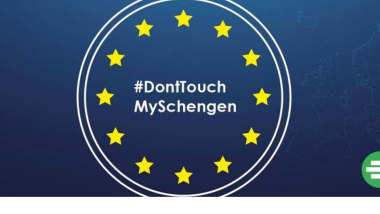

Follow the comments: |
|
